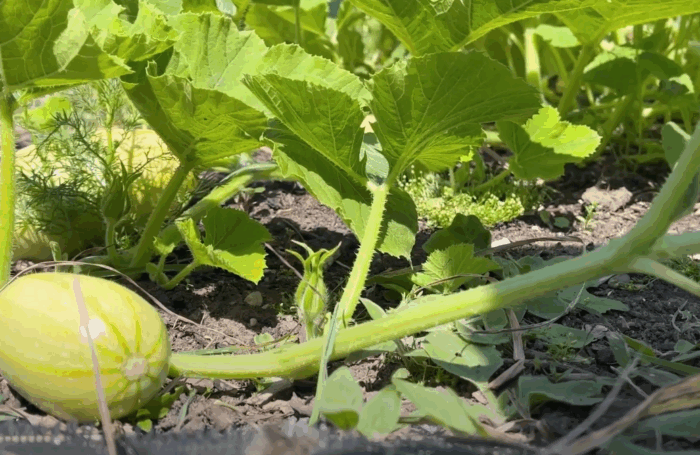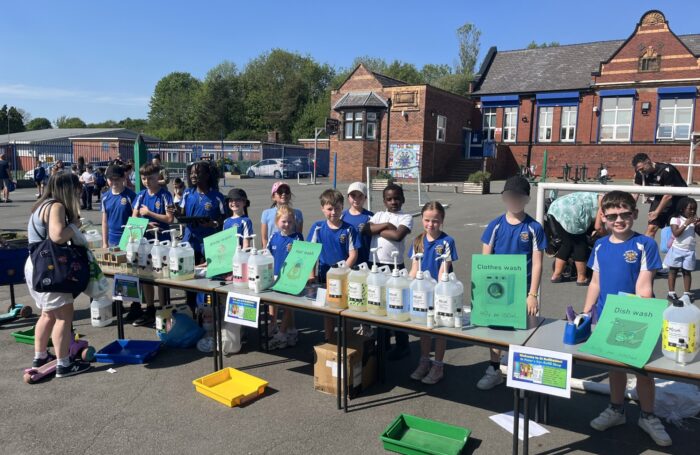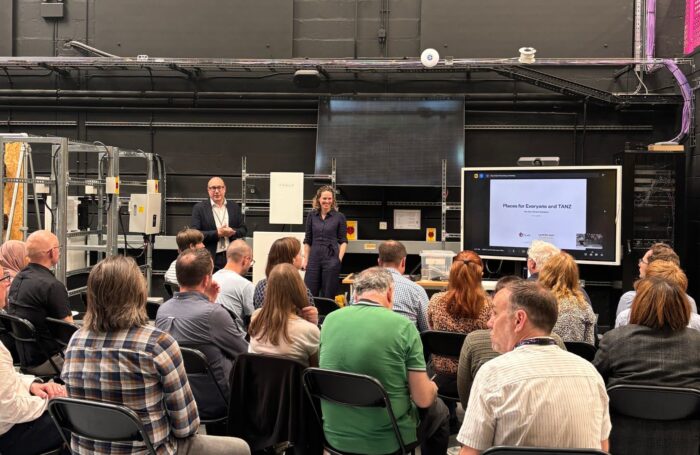From community groups and charities to businesses and schools, we believe that everyone has a role to play in helping nature recovery across Greater Manchester. We’ll be shining a spotlight on the passionate individuals who are already leading the way – our Local Nature Champions.
David Steel is a Wildlife Recorder at Chat Moss.
Tell us about your project.
I carefully record the wildlife on Chat Moss on an almost daily basis. As part of this, I promote the worth of Chat Moss to anyone who will listen – it is the lungs of Greater Manchester.
I also volunteer for wildlife (presently Lancashire Wildlife Trust/Natural England/Carbon Landscape), carry out wildlife surveys which include Winter Bird Surveys/Breeding Bird Surveys/Dragonfly Surveys, and occasionally give talks on an ad-hoc basis to those who insist (although I much prefer to carry out walk and talk sessions in the field!).
How did you first get involved in nature recovery?
From the moment I first noted Lapwing in their springtime tumbling display at the age of 8, I knew that nature was special and that its beauty would never leave me…the trouble is that as my decades rolled by, the wildlife I loved was in freefall and this alone motivated me to try everything I could to record – and hopefully help stop – this decline.

In the 1990s, I copied an old ordnance survey map of Chat Moss and numbered each field and area that I bird watched regularly, allowing me to input my (now daily) wildlife records specifically with the reasoning that when/if the developers came I could prove the worth of these areas to nature.
I send these records to the Greater Manchester Ecology Unit, Greater Manchester Bird Recoding Group and Leigh Ornithologists as a permanent record of my findings, hoping that the value of this area is seen through the wildlife it holds – and can hold in the future.
Why do you think it’s important more people get involved in nature?
Life without nature for mankind is nothing, and if we keep on ignoring the fact that we are merely a part of nature…then we too will decline in the way much of our natural world is going at present.
I was once asked to write a few words as to why I love the Chat Moss, and feel the following can be found in all who are actively involved in nature:
A spring morning at Little Woolden Moss Nature Reserve where I hope this one visit can show why I love and have always loved our Mosslands.
Take your time, don’t rush, the early morning air is cool; the sky gives promise to entertaining the warming sun quite soon. Just stand, just look, take in the view and relax as it’s another morning out on our treasured Moss.
A choir of Willow Warbler set the soundscape as they tell their story…their survival in their African wintering grounds, their return migration back to their place of birth, another couple of ticks in their challenging box set of life and now here they are readying themselves to raising their family and all the challenges that will bring.
A reeling insect insisted upon being heard, “I know what you are” don’t try to outfox a moss wanderer of many a decade you are another migrant who has just returned home but you require a different niche than the Willow Warbler. Yours is to seek out a marshy patch from which you my lovely Grasshopper Warbler can reel out your grasshopper type song.
My eyes have not left the view which brims with carefully formed pools in which Sphagnum Moss, Cotton Grass and other such special plants that an inland ‘raised’ peat bog (an extremely rare habitat in the UK) supports.
The same viewpoint but eight short years ago gave a barren brown desert of peat which was all that left of the original wondrous rare habitat after the peat milling operations finally stopped when the Lancashire Wildlife Trust Charity bought the site with a vision to bring back LIFE to this area.
At a time of life when eight years is a meaningful chunk in my three score and ten I have happily let these slip by contented in the knowledge that a legacy has (and is) being created by the LWT and its wonderful volunteers which my grandchildren can visit and love for its rich swathe of beauty.
Musings over, a deep breath of fresh air and my feet moved me along the southern footpath but they didn’t get me too far for ‘wita-wita-wita’ reached my ears and this I had to see for a Snipe was perched up on a dead birch sending out its song of celebration that after decades someone has cared enough to bring back the habitat of its forefathers putting my mind in its personal Tardis leading me to journey back to my early (very early) days when Snipe were quite common on the moss.
The sun by now had motivated several Peacock Butterflies which are generally obliging and today was no exception to their rule a several posed for me to admire unlike the Common Lizard which dashed at very great speed across the path and once more into cover.
An Oystercatcher that had set up its nest on one of the bunds then raised the decibel level of bird sound to high as it chased off a couple of Carrion Crow which were looking for a late breakfast egg, yes all this beauty and all this wildlife now intertwine about me as the nature which has been brought back to this reserve plays out its dramatic life.
An early emerging Four Spotted Chaser Dragonfly then whisked by me as it set upon its one summer on the wing with this sighting reminding me that the calendar of spring will soon turn to Hobby time.
Which means a treat in store for when this summer visitor arrives it will be putting on a Arial show of such agility that I feel safe to say is more impressive than the Red Arrows as it chases and catches some of the now abundant supply of dragonflies that, yes you have guessed it, this restoration has brought about.
My pathway wandering finally got me to the west of the reserve where a couple of migratory wading birds had paused to rest at this Mosslands oasis. Then after admiring the Dunlin and the Wood Sandpiper and of course wishing them well upon their onward journey I reluctantly started my return home.
Now please don’t get the impression I am reluctant to reach my house…far from it I love it and all it means to me and my life BUT I do have another love…The Moss.
Let us all show it our care and respect for all it can offer to everyone who cares to visit and simply stand, watch and listen to this beating heart of nature.
What do you think is the single greatest priority for nature recovery in Greater Manchester?
For those in power to listen to people who really know the area and its wildlife, taking real notice of their knowledge instead of bringing in their own ‘experts’ who cannot possibly match the knowledge about an area with a few snap surveys.

And if time and resources weren’t an issue, how would you address that priority?
Creating real change for wildlife by ensuring habitats are restored and guaranteed a permanent future that stops the massive decline in wildlife that is taking place across the UK.
Police these areas and employ wardens to care for the landscape in such a way that nature is forever the number one priority – look at Little Woolden Moss Nature Reserve, which is now hosting wildlife that only 12 years ago had been lost due to the poor decisions made to allow peat milling in the 1990s.
Wildlife WILL return if we want it to!
How can people get involved in your project?
The best way is to contact the Greater Manchester Ecology Unit and submit all wildlife sightings on their excellent electronic system, ‘Swift’ – these same records can also be submitted to the Greater Manchester Bird Recording Group.
I am happy to show people around Chat Moss if they wish to learn more about its wildlife, but the most important thing is to record your wildlife sightings and submit them, wherever you are in Greater Manchester.
Find out more about our plan for nature recovery
Greater Manchester is currently developing its Local Nature Recovery Strategy, which will set out a blueprint for a more liveable city-region, with fairer access to green space for all.
Find out more including ways to get involved on our nature recovery webpage.


